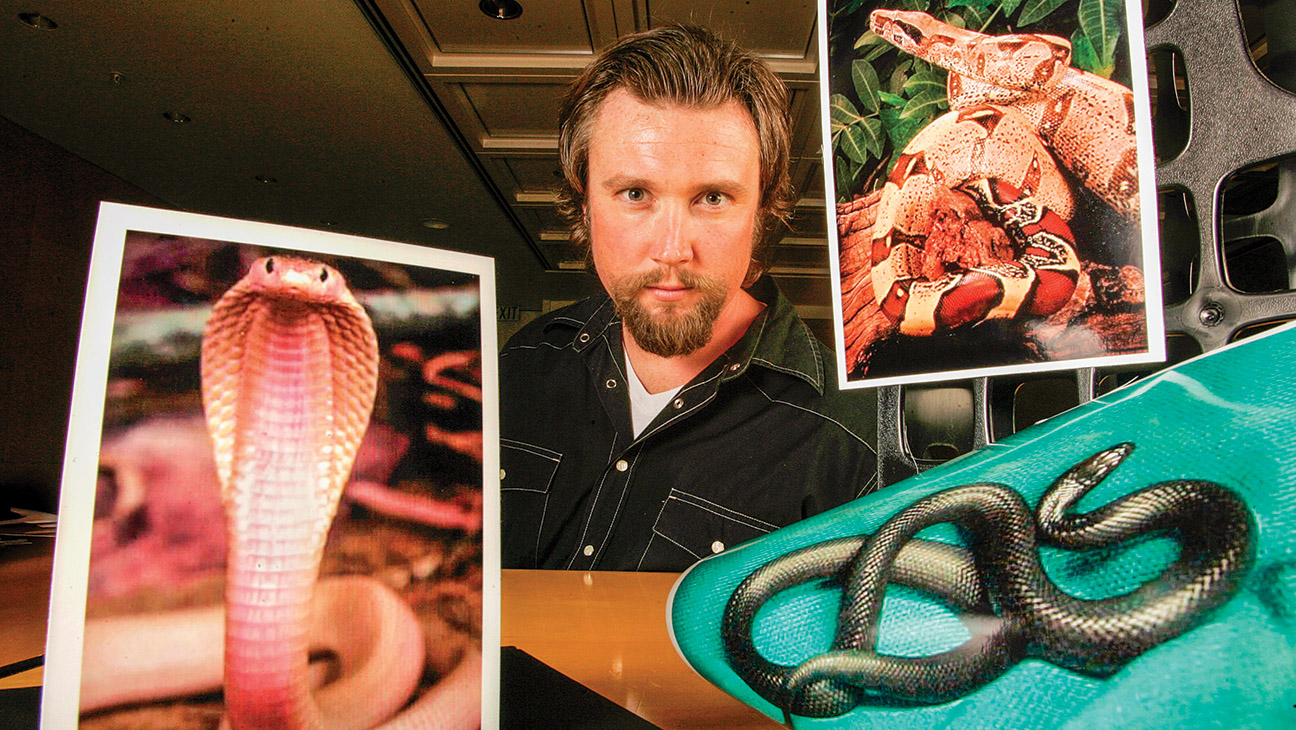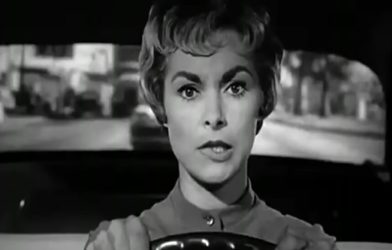It was November 2021, deep COVID time, and I had unmasked to have a drink with Kiki Benzon at The Surly Goat, a bar in West Hollywood. I hadn’t seen her in 30 years. In the early 1990s, Kiki and I had been rivals on the über-geeky North American private-school debate circuit; she attended school in British Columbia, I was from Connecticut, and we’d met as seniors at a tournament in Boston, then another in Winnipeg. After we got our stories on the table — my writing, my wife and children, her teaching (film studies at USC), her early recent widowhood — we got around to John Connery Heffernan III.
“Heff” was my high school classmate and debate partner and traveled with me to those long-ago tournaments; at one of them, he and Kiki spent a steamy night together. Kiki and I had both fallen out of touch with Heff, but knowing him, experiencing him, was enough to bond us forever; it was like being part of a secret club. Anyone who knew Heff, even a little, had heard his manic, often brilliant disquisitions on literature, film and hip-hop and had listened to him rhapsodize about fast cars, James Dean, jazz and the horror novels of Clive Barker. All his friends knew the way he reacted to a novel idea or a compelling work of art: He looked truly startled. He would widen his eyes and pull his head back, as if genius was hot to the touch. Maybe because his was.
Both of us knew that in 2006, Heff earned permanent Hollywood B-list infamy as the screenwriter of Snakes on a Plane, the cult classic, so-bad-it’s-good Samuel L. Jackson thriller with the title that explains the movie’s entire plot. Heff had been all over the internet then, and all of us who’d known him had told our friends, “Hey, you know that movie Snakes on a Plane? I dated/debated with/saw a show with/slept with/drank with/drag-raced with/got high with the guy who wrote it.”

With Mark Oppenheimer (right) at a high school debate tournament in England in 1991.
Courtesy
In the years since, his trail had gone almost cold. Here’s what we knew from Google: He’d collaborated on a comic book and sold a script that didn’t seem to have been produced. A couple of years earlier, I’d found his Facebook page, with a lot of posts about cars, old TV (he was a Magnum, P.I. fan) and the Detroit Lions.
Our next step was obvious. We had to flush him out. At about midnight, we said goodbye, agreeing to work the web and our old friends to see what we could learn. I got in my rental car, found the I-5 and began cruising toward San Diego, where I had things to do the next day.
An hour later, my phone rang. I answered.
“Mark?” Kiki said. “John’s dead.”
Speeding down the highway, I pressed the phone to my ear. She started to cry. “I emailed his brother, and he wrote right back. John died in 2017.” According to Kiki, Heff’s brother’s email was brief and said nothing about how our friend had died.
I got to San Diego, slept badly and took an early walk by the beach. Nobody was out but me and a few surfers. Wading at the edge of the Pacific, I decided to find out what happened to my old friend.
I still don’t know for sure. But after two years of searching, I realized I was less interested in how he died than how he lived. He had always courted danger, taken risks, played a game of chicken with life. In better times, he was able to persuade others to join him on the ride. But when I talked to people who had been close to him, from the late ’80s through his last days, I discovered that by the end he’d lost everyone. He became isolated, and I fear that when he died — meeting an end that some say he had foreseen, even wanted — he died alone, with only his vices for company.
***

Heffernan, then 31, at talent agency ICM in August 2006, two weeks before Snakes on a Plane premiered
Mel Melcon/Los Angeles Times/Getty Images
Heff and I met as ninth graders at The Loomis Chaffee School, outside of Hartford, Connecticut. At a school where half the students boarded, we were day students, which meant we would never be at the top of the social hierarchy. The boarders came from Greenwich or the Upper East Side, and they had the real money. But among day students, Heff was something of an aristocrat. His family belonged to The Hartford Golf Club, and his father, a successful lawyer, drove a Jaguar convertible, in which Heff was sometimes dropped off or picked up. His maternal grandfather, Joseph Ryter, had been a congressman for one term, 1945-47, which Heff liked to mention. The family had a summer house in Old Saybrook, on the Long Island Sound. I knew all this early on in freshman year, in the way that a freshman learns who matters and why.
Heff and I fell in together through our activities: debate, newspaper, cross country. For the first two years of our friendship, his money and class were exciting to me. To a 14-year-old boy whose own father drives a Volkswagen Dasher, having a friend whose father drives a Jag is a big deal. Heff and I also shared a preppy pomposity; we were the kind of boys who dressed our aspirations in suede elbow patches, or would have liked to. He once told me that his mother’s family had been the Von Ryters but had dropped the aristocratic Von; I found that as cool as he hoped I would.
In the last two years of high school, however, I grew to understand that what was truly compelling about Heff was the way he betrayed the expectations of his class. He was deeply ambivalent about the manor to which he’d been born, and as high school wore on, he realized that, except for a certain sartorial sense and a freewheeling enjoyment in spending his parents’ money, he was ill-suited to being a New England preppy. He kept doing the things expected of an Ivy-bound prep school student — debating, newspapering, running, making good grades — but they weren’t him, or who he imagined himself to be.
For one thing, at a school that prized physical grace, Heff was a terrible athlete. We ran together for three years, and what I remember is how he never seemed to get better. Heff did some theater, and he could draw. His real passion was for words, but his dark sensibilities made it hard to place his baffling, experimental fiction in The Loom, our literary magazine.
“His stories still upset and amaze me when I think about them,” says Sarah Larson, who edited The Loom and is now a staff writer for The New Yorker. “Most short-story submissions that we got went for art but lacked a good plot; John’s were tightly written, lurid, with a zinger of a plot. And the plots could be loathsome.” She recalls that one of his stories was about a poor Appalachian family that ate its young for food.
Heff’s struggles with this art — not to mention his inert, unsuccessful attempts to get a girlfriend — only sharpened his image of himself as a beautiful failure. In truth, the school did not have a category, much less a scene, for the kind of man Heff was becoming: an old-school, rebellious beat. He was into jazz and Frank Zappa; he loved Jack Kerouac’s On the Road; and he really loved Hunter S. Thompson’s drug-saturated classic, Fear and Loathing in Las Vegas.

His 1992 senior yearbook photo from The Loomis Chaffee School in Windsor, Connecticut.
Courtesy
Thompson and Kerouac spoke to Heff’s interest in constant movement, in getting out of this place, if it’s the last thing you ever do. In the works of both authors, one could find the two vehicles Heff would use to surge over the seawall, to see what was beyond: cars and drugs, literal movement and psychic movement. And from the moment he got his driver’s license — and access to his father’s convertible — he loved combining the two. For many of us, driving drunk was an occasional necessity, but for Heff it was a passionate hobby. “He outran cops a number of times when I was in the car,” our classmate Adam Larrabee recalls. “This was the kind of shit that could have gone really bad.”
Heff’s parents supported his budding car habit, providing him with a Jeep Cherokee, the must-have rich-boy ride of the time. I can’t remember what happened to that car — did he crash it? That’s my memory — but it somehow went away, and his parents acquired for him another car. “When he graduated, his dad gave him a Porsche,” our classmate Sam Kenna remembers. “It was the car in the first Top Gun. It’s a Speedster, the one Kelly McGillis drives.” Kenna never forgot how, the night of high school graduation, Heff let him take the car for a spin. “There might have been some alcohol involved,” Kenna says, “for better or worse.”
When he was drunk, or high, or looking to get drunk or high, an inner meanness could come out. One time, he, Mark Murphy and some other friends were in the Berkshires at somebody’s weekend house, and they got drunk on beer and went sledding in a snowy field. “I was lying in the snow, face down, taking a break from sledding,” Murphy says, “and literally Heffernan pissed on me, just drunk and being crazy. And I was like, ‘Dude, you take everything way too far.’ To him, it was funny and demeaning — and I was like, ‘That was my jacket.’ ”
I seldom saw the dangerous side of Heff. I was too square to get drunk in a Jaguar and outrun cops. When we hung out in his bedroom, sober, he’d play CDs, toggling from N.W.A to Beethoven. He had a copy of Beethoven’s Ninth recorded by the Vienna Philharmonic, under Karl Böhm, and I remember how we scrutinized the CD case, discussing how to pronounce the conductor’s umlauted name: “Berm”? “Burm”? “Buuurm”? That was on a Saturday afternoon, and who knows what he did that night. I heard Monday morning rumors of Heff’s exploits, but I didn’t know for sure. There was a lot I learned only years later — for instance, that he was robbed, more than once, looking to buy drugs in Hartford’s worst neighborhoods.
***
At Cornell, Heff and Murphy got assigned to the same dormitory, a music-themed residence hall known as JAM, for Just About Music. Murphy remembers Heff putting up posters of Jim Morrison. “He idolized Jim Morrison,” Murphy says. “I remember him talking about it: ‘I want to be Jim Morrison, I want to party, I want to do drugs.’ His view of it was, I think, ‘I am probably going to overdose someday’ — live a brief life on the edge.”
Heff rushed a hard-partying fraternity, while Murphy chose a gentler house. “He probably thought the fraternity I rushed was full of dorks,” Murphy says. “He was kind of unstable. He had that addictive personality: drugs and drugs and drugs and drugs, just getting into trouble. … It reached a point where I thought, ‘I am very different from this guy. We are on very different paths.’ ”
If Heff made close friends at Cornell, I couldn’t find them. But I did find his one serious college girlfriend. When Heff met Andra in an English class, he was an 18-year-old freshman and she was a married 24-year-old junior who had taken several years off before college. He was smitten. Nothing happened that semester, but when they returned to school the following fall, her marriage was on the rocks, and Heff made his move.
“He pulled out all the stops, in his boyish way, to charm the shit out of me,” Andra says. They began dating in the spring of 1994. “We ended up having a very intense, very passionate love affair. It was so painful at the end of that semester because I graduated and he went to Australia” — to spend his junior year abroad. She was still married and had no immediate plans to divorce. “But we were absurdly in love,” she adds. “We had spent 24/7 together the whole semester.”
“Andra, I love you more than anything,” he wrote her. “Just say the word, and I am gone from your life forever. But please, wait for me.”
She did not wait for him. But several years later, when she was in San Diego, she drove up to Los Angeles to see him. “He told me about two screenplays he wanted to write,” she says, “one about teenage vampires, the other about snakes on a plane. I said, ‘That is the dumbest idea you’ve ever had.’ ”

Heffernan with early flame Kiki Benzon, who told the author about Heff’s death.
Courtesy
***
Heff left for California right after college. “I bought this big blue child molester van with no windows from my neighbor for about $1,200 and drove across country to California,” Heff told The Cornell Daily Sun in 2006. “It took about three months to get there. I had 500 bucks in my pocket, which was enough to move into this hotel in Little Moscow in Hollywood.” He got hired on at the film school of USC, where he worked as the production coordinator. Soon, he left USC for a production company called Davis Entertainment, where he was the assistant to producer Craig Berenson. When Berenson left for Patchwork Pictures, he brought Heff with him.
At Patchwork, Berenson and some other producers ran a regular event called Genre Day Cocktails. On Monday, a genre would be announced, and on Friday afternoon, over drinks, anyone could pitch a story in that week’s genre. On action-adventure week, Berenson pitched a concept that had come in, unsolicited, from a writer named David D’Alessandro. It was a spec script called Venom. The script was pretty rough, but Berenson thought the plot had potential.
“I said, ‘Here’s the setup — we’re on a flight from Honolulu to L.A.,’ ” Berenson remembers telling the room. “ ‘Past the point of no return, 30,000 feet up, and 100 snakes get loose. The captain is bit. What are you going to do? How are you going to land? We’ll call it Snakes on a Plane.” At that moment, Heff turned to Berenson and said, “Can I work with you on this?”
Berenson thought Heff had potential, so he agreed to option the script from D’Alessandro for Heff to rewrite. They worked up a pitch and sold it to Paramount, and Heff began working on a full script.
“The day we were turning in John’s second draft was 9/11,” Berenson says. “That killed every plane movie. I said, ‘It’s not over and done, but it’s six months before we can talk about it again.’ ” Heff bided his time, then returned to his project. Producer Don Granger had bought the script at Paramount, which now wanted no part of the movie, and gave the rights back to Berenson. But Granger had left Paramount and was now at Mutual Films, which had a production deal with New Line Cinema. “Don then showed it to New Line,” Berenson recalls, “and their executive said, ‘We’d make this movie in a heartbeat.’ ”
In the end, Heff shared writing credit with Sebastian Gutierrez, who wrote the 2003 horror flick Gothika, with Halle Berry and Penélope Cruz. But Berenson notes Snakes was Heff’s movie all the way. “John wrote those first two drafts,” while Gutierrez “did the final polish that got it over the top.” As for D’Alessandro, who had the original idea, he “hated” the final movie. He had in mind something artier, more stripped-down. “I was trying to write Aliens on an aircraft,” says D’Alessandro, now retired as an administrator at the University of Pittsburgh. “And they turned it into some nonsensical thing, with 37 kinds of snakes.”

Samantha McLeod is attacked by a venomous snake while joining the mile-high club.
New Line Cinema/Courtesy Everett Collection
It’s true, the final Snakes on a Plane, directed by David R. Ellis and released in 2006, is more of a schlocky, gross-out groaner than a taut thriller. The plot is this: To stop a witness from testifying against him, a gangster stows away poisonous snakes in the cargo hold of a plane on which the witness is traveling. After the snakes make their way into the cabin and the cockpit, biting numerous passengers and both pilots, the FBI agent escorting the witness must save the remaining passengers and land the plane. The characters have no depth, the dialogue little wit. But the plot moves briskly, the special effects are strong — the snakes are genuinely creepy — and, like the disaster movies of the 1970s, the movie gets far on casting, being chock-full of stars and future stars: Bobby Cannavale, Taylor Kitsch, Kenan Thompson, Julianna Margulies, Todd Louiso.
Then there is Samuel L. Jackson, who still wore his post-Pulp Fiction halo of cool, and who, as the FBI agent, utters the line that made one clip from the film a viral sensation at the very moment, a year after the founding of YouTube, when video virality was being born: “I have had it with these motherfucking snakes on this motherfucking plane!”

Samuel L. Jackson in the movie that became a meme.
New Line Cinema/Courtesy Everett Collection
It was one of the last great catchphrases, and it’s the reason that, while not many people saw Snakes on a Plane, everybody knew Snakes on a Plane. And what they knew, or thought they knew, was that it was macho, male, dopey and smug: the kind of movie that better be in on its own joke. Heff had written a solid script, one that provided two hours of good American popcorn entertainment, but his reputation in the industry would forever be both bigger and smaller than that. He was very good at making stuff that was pretty bad.
***
I doubt Heff cared much about being a critical disappointment. In 2006, he was 32 years old and had written one of the most talked-about movies on the planet; the future was bright. But Snakes on a Plane did not lead to a torrent of new work. Mason Novick, who was Heff’s agent then, remembers his client as a car-obsessed bro, into racing Porsches, with a gift for writing funny, action-packed pulp that was, alas, difficult to get produced.
“He had a script called A Chance for Both Barrels,” Novick remembers. “We sold it like five times, but no one would ever make it.” The plot, Novick says, was loosely based on Red River, the 1948 Howard Hawks/John Wayne Western in which a professional gunman, Chery Valance (played by John Ireland) is hired to help drive cattle across the plains. But in Heff’s version, the mercenary “was a white Rastafarian guy” who came to town. “It was so weird,” Novick says. “It didn’t get made then, and it certainly would not get made now. But it was one of those scripts — it was a fun script.”
Noah Rosen was Heff’s manager, right up until the moment in the mid-2000s when Heff fired him. When I talked to Rosen, he was philosophical about his termination, even remembering Heff as a “gentleman.” “To his credit,” Rosen says, “he took me to dinner to fire me, which no one has ever done since. Usually when you get fired, it’s a phone call.”
The two had been friends — “He was the friend you had who you knew you were going to get in trouble with,” Rosen says, “and you kind of liked it, and you were kind of scared” — but after being fired, Rosen never saw him again. He tracked Heff’s career, checking studio databases to see what Heff was up to. Which was pretty much nothing.
“He didn’t really do anything after Snakes on a Plane,” Rosen says. “My theory was that Snakes on a Plane kind of killed him. I love that movie, I swear by that movie, I have seen it a thousand times, I wish there were more movies like it. I don’t have a theory as to why he didn’t write anymore.”
Heff disappeared, from the business and from the whole Hollywood scene. “I don’t know where his friends went,” Rosen says. “If you had told me he moved away, went back home, that would make sense. But the thing that has to be said is, he really wanted to make movies, man. He really wanted to tell stories, and wrote his ass off and was fucking talented.”
At about this time, Heff crashed his car while high on whippets. “He drove into a 91-year-old’s house,” an ex-girlfriend of his tells me. He went into rehab, and while he was there, his then-fiancée dumped him. In a Facebook post from July 4, 2014, Heff alludes to the crash, which apparently happened on an earlier July 4, writing, “the Fourth has a meaning for me, too, and it’s cold and metallic — the crash of four-wheel-drive sheet metal, the steel frame of a hospital bed, and the nightmare surreality of my face being removed from my skull and titanium plates and screws being drilled in beneath to keep the whole thing in one piece. Enduring. Alone.”

Heffernan, who always loved moving fast, in an undated photo he posted on Facebook.
Courtesy
From about 2010 on, Heff lost touch with his agent, his manager and everyone who had made him, briefly, a rising star. In 2010, he was the writer for a comic book, Driver for the Dead, the first issue of a planned three-parter about a chauffeur who drives problematic corpses, like a newly dead vampire, to their graves. The comic got some attention in the horror and comics communities, and among die-hard fans of Snakes on a Plane, but it was not a hit, and the next two installments never appeared.
Even as his writing career cooled, Heff stayed near Hollywood. From 2013 on, he was a regular in the Superior Court of California, Los Angeles County. I have dozens of pages from the court dockets about arrests, arraignments, probations and continuances: the institutional, Courier-font record of a life in decline. The charges included petty theft (he pled guilty and was ordered to pay $855 in restitution and court fees, and ordered to “stay away from all Target stores in the city of Pasadena”), possession of a controlled substance and violation of probation. The Heffernan file ends in 2015, when he was put on probation, ordered to pay $242.01 in restitution for shoplifting and told to “stay away from Walmart located at 24671 Carl Boyer Drive” in Santa Clarita.
***
Heff’s friendships were increasingly online, with men he never met in person. “I read his Driver for the Dead comic, the graphic novel, thought it was really cool and looked him up on Twitter,” says Jake Reedy, an Australian filmmaker. “We started chatting there all the time, got to talking on Facebook. Became good friends from there.” Reedy was awed that this big-shot Hollywood screenwriter made time for him. “It was always amazing to me how generous he was with his time. You always think, ‘This is the guy who wrote Snakes on a Plane for chrissakes!’ ” Heff would read Reedy’s scripts and offer detailed feedback. “I am hesitant to say he was a mentor, but in a lot of ways he kind of was.”
Heff also became close, in an internet way, to Reedy’s friend Dru Brown, another Australian filmmaker. Brown recalls that Heff donated money to a Kickstarter campaign for Brown’s 2014 movie The Suicide Theory. “On the last day of the campaign, he gave us $500 for the campaign,” Brown says. “He didn’t say anything about it. He did it overnight, right before the thing closed. I was like, ‘Holy shit, that’s incredible.’ He said, ‘No worries, just go make a great film.’ There was zero ego about him. Just a great, supportive guy.”
After The Suicide Theory got some positive buzz and was acquired by Netflix, Sony Pictures asked Brown whether he had any other scripts he wanted to direct. Brown reached out to Heff and asked him, “Do you have anything lying around?” Heff sent him some old scripts that had never been produced. “One was an old Western, kind of like a horror film,” Brown says — most likely A Chance for Both Barrels, the script Heff sold but never got produced after Snakes on a Plane.
Brown last exchanged Facebook messages with Heff “maybe three or four months after that,” probably in 2016. Later that year, on Nov. 16, 2016, Heff would post his last Facebook message ever. It was, apparently, the five-year anniversary of Reedy and Heff becoming Facebook friends. “Happy Friendaversary, Jake!” Heff wrote. “Hmm, that might come off just a little too … friendly. Y’know, we should probly go shoot some sharks with machine guns from the back of a monster truck or something, just so people don’t get the wrong idea. Right after I finish watching all these Zac Efron movies I downloaded. God, he’s dreamy.”
When Heff went dark on Facebook, his friends were not alarmed, not at first. “It wasn’t unlike him to take a break on social media, then pop back up,” Brown says. “But then months turned into a year …” In 2020, according to Brown, he got a message from Reedy that Heff had died. “He said, ‘Look, I just heard from one of John’s friends …’ ” The story, as Brown heard it from Reedy, was that Heff had overdosed. “We were devastated,” Brown says. “Stuff like that shouldn’t happen to good guys like that.”
***
When I asked one of Heff’s old defense lawyers about him, I got a parable. “I used to say that back east, trouble came in the form of a couple big guys with crooked noses and a baseball bat,” the lawyer told me. “In L.A., she’s 5’2″ in a sundress.”
Eventually, I found the woman the lawyer must have been referring to. Her name was “Lori,” and she met Heff in 2006, when he was living in Oxnard. She was working as a “private dancer,” she tells me, and Heff became a regular client, paying for her services “more and more.” When she asked him what he did for a living, “He said, ‘I just wrote a movie,’ and I said, ‘Anything I might have heard of?’ And he said, ‘A little thing called Snakes on a Plane.’ Once it came out, I was like, ‘Wow, cool.’ ”
After the movie debuted, Lori did not hear from Heff for “a couple years.” Then one day, she went to visit a client in Pasadena, and Heff answered the door. “He had lost a lot of weight, had a smaller house and everything.” After they reconnected, she “stopped dancing” and started dating him exclusively. She was the one who introduced him to heroin.
“I was using it,” Lori says, “and I told him, ‘No, you’re not doing this.’ I was so against him trying it, but he just insisted upon it, and we ended up just doing it together. We were bad for each other, we were deep into our addiction, and he had the money, and I helped him spend it.”
Over the next few years — from about 2010, when they started dating, to 2015 — Heff moved from coke and pills, whippets and booze, into a powerful heroin addiction. In 2012, he posted to Twitter a quotation attributed to late indie film actress Zoë Lund: “If one can weep for joy, one can also find joy in weeping. That is heroin.” They fought addiction, and the law, separately and together. Lori’s memories of those years were affectionate but hazy. “Those years were the best years of my life, being with him,” she says, even as they were filled with suffering. “We both went to rehab at the same rehab, different rehabs, I don’t know … we both went to jail for different things.”
After they spent down his money, Heff began cooking up grandiose criminal plots to make more. He “got into fraud really badly,” Lori says. “He wanted to do all these things with fraud. He wanted to do credit card fraud so badly.” As she remembered it, that scheme went south when the police, looking to bring her in for a missed court date, learned she was staying with him. “They raided his house and found everything in his office and took him to jail, and of course he got bailed out quickly” — by his parents, she says. (I could not find evidence of any arrest for credit card fraud or a similar crime.)
By 2015, Heff was not getting work, and he was having trouble staying housed. “Mark, I don’t think I have the memories you’re looking for,” says a landlord of his from this era. “When I knew John, he was a terrible junkie, spending his days doing heroin and smoking crack. He was completely dedicated to it and to his own demise. I actually grew to fear whatever he might do next and kicked him out of my property. No hard feelings about him, especially considering the way he died: alone and friendless.”
Lori tells me that Heff had one final shot at a better life, a job offer in Northern California. At the time, he was clean and on Suboxone. The job, in San Rafael, was with a video game company — a good fit for a sci-fi/fantasy/computer geek like Heff — and it paid $100,000 a year. “He asked me to come up there and start a new life with him. I was like, ‘Yeah, of course, this is great. I want to start over with you.’ I went up there. I was clean, too. I was on the Suboxone with him.”
But the job never happened. After his welcome party, someone at the company learned he had a criminal record. “They called him in and said, ‘I am sorry, we can’t take you on the team.’ He was devastated, and so was I.”
After the job in San Rafael went bust, Heff and Lori moved together to Oregon, but she got depressed and decided to return to L.A. “That was the last time I saw him,” she says. “I have a photo of us, him with me at the airport and everything, the last time I was with him.”
They kept in touch by telephone. He found work as a car salesman, she says. She worried that he was still using. At one point, she got the impression he’d gotten himself fired by the car dealership in Oregon “in order to collect unemployment.” Then, in 2017, she graduated from court-ordered drug court and wanted to share the good news with Heff, but she couldn’t find him. Then she heard from their mutual friend Ryan — who would not speak with me — that Heff had died. According to Ryan, Lori says, Heff’s “parents got him an apartment in Virginia, and the day before he was supposed to start his new job, he went outside and found someone in the street and got a Xanax off someone, probably laced with fentanyl, and after being clean for so long, he took it and he died.”

Heff at the beach in San Clemente, California, in 1998
Courtesy Karina Bozzuto Weiss
***
After I began looking into Heff’s life, I reached out to his parents and siblings. I got a response from his father, who had the same soft, warm voice as the man I remembered, the one with the Jaguar convertible we all loved. He told me his son had died from “sudden cardiac arrest,” which he says had killed the boy’s grandfather and one uncle. I asked if there was a grave, and he said no. “We obeyed his wishes and cremated him,” he says. (I found it sad, but believable, that a man in his early 40s had made such wishes known.) They scattered his ashes off Catalina Island, in the Pacific Ocean southwest of Los Angeles. “He had a plane and used to fly out to Catalina Island. It was his favorite place.”
Lori went looking for an obituary but never found one. His family “really buried it,” she says. She was sad that they never reached out to her, but she understood. “I am sure they blame me,” she says. “I mean, in a way I kind of wish I never met John. Because I am sure he wouldn’t have died if he hadn’t met me.”
I think that’s wrong. Heff always loved danger, and danger, even more than his friends or family, loved him back. “I think he always wanted to have a heroin problem,” our classmate Adam Larrabee says. “In the sense of his idolization of Pulp Fiction and these sort of wounded antiheroes. Maybe I’m wrong in that …”
I found notices for two Catholic Masses celebrated in Heff’s honor. One was in Old Saybrook, Connecticut, where the family kept the summer home where Heff hosted several badly concealed high school parties. It was, according to the church bulletin, requested by his father. The other was in Dunmore, Pennsylvania. A woman’s name was given as the requester of that one, but I have not been able to find her.
The last email I got from Heff was in 2008. I was working on a memoir about our high school years, and I had written to ask for his reminiscences. I had also taken the opportunity to apologize for an old quarrel. He wrote back a sweet note in which he said, basically, not to worry about it. “It was high school,” he wrote, “and everybody did things they regret and wish they could change, and I’m certainly no different and in no position to cast judgment.”
Me neither — no judgment here. I wish I could tell him that myself. I still harbor a small hope that he is executing some twisted piece of performance art, hiding out near a beach somewhere. In this dream, he is spending his days surfing, reading, driving fast cars and flying small planes. At night, he is working on his next screenplay. He is still keeping up the promise to himself that he once described in a letter to Kiki, his high school flame. He knew, he told her, that he was never going to spend his life “bored and miserable or in front of some television.” He had other plans: “I want my life to shine, baby, and I’m going to make it glisten.”
This story appeared in the Oct. 23 issue of The Hollywood Reporter magazine. Click here to subscribe.









